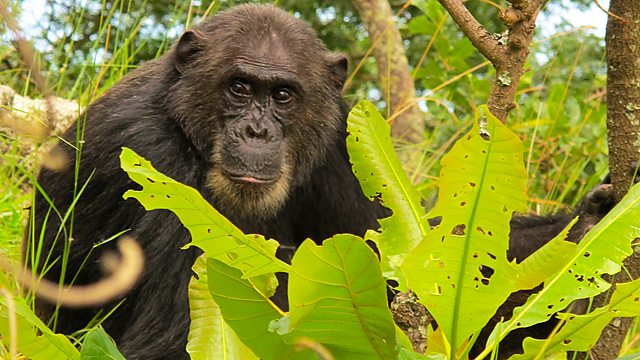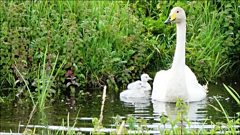Wetland Habitats
Joanna Pinnock brings in the New Year with the clatter and spectacle of a winter wader site in Hampshire. Plus a report on the plight of Britain's native oysters.
The first of January is often a special day for birdwatchers everywhere as the race is on to begin their new year lists whilst also reflecting on the year list just completed. For this Saving Species the role of wetland habitats in providing a wintering refuge for our own wildfowl, and to birds from more northern areas of Europe, is explored at the Wildfowl and Wetland Trust reserve at Welney in Cambridgeshire and Lymington Marshes in Hampshire.
Joanna Pinnock visits Welney at dawn to witness the very noisy but magical spectacle of thousands of Whooper and Bewick's swans flighting off from the pools by the reserve centre to head out to feed on the fields for the day. Over 1,000 Bewick's swans arrive and up to 5,000 Whooper swans with many more out on the 2,000 hectares which make up the Ouse Washes and surrounding fields.
Chris Sperring is on the Hampshire coast at the Lymington-Keyhaven nature reserve which is home to important numbers of Dark-bellied Brent Geese amongst many other species of smaller ducks. The geese come to the reserve for the winter from Siberia. With their distinctive call, these grass grazers benefit from the rough grazing management which takes place in the summer with cattle and which ensures a short rich sward for the geese when they return for the winter.
These areas of our coastline are a vital jigsaw of protected areas providing roosting and feeding areas for so many species of ducks, geese and swans that come to the UK.
Also in the programme - News from around the world with our regular news reporter, Kelvin Boot, plus we'll update you on the activities of the Open University's iSpot.
Presenter: Joanna Pinnock
Producer: Sheena Duncan.
Last on
More episodes
Clip
-
![]()
Whooper and Bewick's Swans Spectacle at WWT Welney
Duration: 03:39
Welney Wetland Centre
in Norfolk takes in 1,000 acres of the northern most part of the Ouse Washes – Britain’s largest area of seasonally-flooded land and the setting forÌýthe mass winter gatherings of many thousands of wild ducks, geese and swans.
Ìý
Two species of swan that flock to Welney are the Bewick's swan and the Whooper swan.Ìý The (Cygnus columbianus) isÌýa subspecies of the Tundra swan and the smallest swan in Europe.Ìý Breeding in the cold Arctic tundra of northern Russia, the western population winters in northern Europe, with the British Isles boasting some sizeable and surprisingly musical flocks. The eastern population heads towards China and Japan for the winter season.
Ìý
The much larger (Cygnus cygnus)Ìýspend their summer in Iceland, northern Scandinavia and Russia where they breed before flying south to spend the winter in Scotland, northern England and Ireland.Ìý They have to fly about 500 miles to get to the UK having to cope with extreme weather, avoid hunters and other hazards such as power lines and wind farms.
Lymington-Keyhaven Nature Reserve

The is a 500 acre site located between the mouth of the Lymington river and the village of Keyhaven.Ìý Purchased by Hampshire County Council between 1973 and 2006, the reserve was set up to protect its unique historical and wildlife heritage.
Ìý
One species which resides at the reserve is the Dark-bellied Brent Goose (Branta bernicla bernicla),Ìýa sub-species of the .ÌýÌýThey are small and brown with a black head and neck andÌýa dark belly.ÌýÌýThey fly in loose flocks along the coast, rather than in tight skeins like grey geese.Ìý It is an because of the important numbers found at just a few sites.
Ìý
The photograph features the Senior Ranger Pete Potts and Reserve Manager Pete Durnell from the Hampshire County Council at the reserve.Ìý The image is courtesy of Chris Sperring.
Broadcasts
- New Year's Day 2013 11:00±«Óãtv Radio 4
- Thu 3 Jan 2013 21:00±«Óãtv Radio 4
The Open University
Get closer to the species with The Open University


